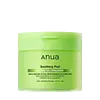What's inside
What's inside
 Key Ingredients
Key Ingredients

 Benefits
Benefits

 Ingredients Side-by-side
Ingredients Side-by-side

Water
Skin ConditioningButylene Glycol
HumectantDipropylene Glycol
HumectantPropanediol
SolventGlycerin
HumectantBetaine
HumectantDiglycerin
HumectantMethylpropanediol
SolventHydroxyethyl Urea
Humectant1,2-Hexanediol
Skin ConditioningHydroxyacetophenone
AntioxidantGlycereth-25 PCA Isostearate
EmulsifyingPanthenol
Skin ConditioningMelia Azadirachta Leaf Extract
Skin ConditioningXanthan Gum
EmulsifyingEthylhexylglycerin
Skin ConditioningDisodium EDTA
Melia Azadirachta Flower Extract
Skin ConditioningAllantoin
Skin ConditioningSodium Polyacrylate
AbsorbentGlyceryl Acrylate/Acrylic Acid Copolymer
HumectantPvm/Ma Copolymer
Emulsion StabilisingTheobroma Cacao Seed Extract
AntioxidantDextrin
AbsorbentHydrolyzed Hyaluronic Acid
HumectantHyaluronic Acid
HumectantSodium Hyaluronate
HumectantAzelaic Acid
BufferingBisabolol
MaskingDipotassium Glycyrrhizate
HumectantZea Mays Kernel Extract
Centella Asiatica Extract
CleansingCentella Asiatica Leaf Extract
Skin ConditioningCentella Asiatica Root Extract
Skin ConditioningAsiatic Acid
Skin ConditioningAsiaticoside
AntioxidantMadecassic Acid
Skin ConditioningMadecassoside
AntioxidantCeramide NP
Skin ConditioningChlorella Vulgaris Extract
Skin ConditioningMelaleuca Alternifolia Leaf Water
AntimicrobialSqualane
EmollientDimethylsilanol Hyaluronate
HumectantHydrolyzed Sodium Hyaluronate
Skin ConditioningFructan
Skin ConditioningPinus Pinaster Bark Extract
AntioxidantPotassium Hyaluronate
Skin ConditioningHydroxypropyltrimonium Hyaluronate
Sodium Hyaluronate Crosspolymer
HumectantGlucose
HumectantSodium Hyaluronate Dimethylsilanol
HumectantSodium Acetylated Hyaluronate
HumectantWater, Butylene Glycol, Dipropylene Glycol, Propanediol, Glycerin, Betaine, Diglycerin, Methylpropanediol, Hydroxyethyl Urea, 1,2-Hexanediol, Hydroxyacetophenone, Glycereth-25 PCA Isostearate, Panthenol, Melia Azadirachta Leaf Extract, Xanthan Gum, Ethylhexylglycerin, Disodium EDTA, Melia Azadirachta Flower Extract, Allantoin, Sodium Polyacrylate, Glyceryl Acrylate/Acrylic Acid Copolymer, Pvm/Ma Copolymer, Theobroma Cacao Seed Extract, Dextrin, Hydrolyzed Hyaluronic Acid, Hyaluronic Acid, Sodium Hyaluronate, Azelaic Acid, Bisabolol, Dipotassium Glycyrrhizate, Zea Mays Kernel Extract, Centella Asiatica Extract, Centella Asiatica Leaf Extract, Centella Asiatica Root Extract, Asiatic Acid, Asiaticoside, Madecassic Acid, Madecassoside, Ceramide NP, Chlorella Vulgaris Extract, Melaleuca Alternifolia Leaf Water, Squalane, Dimethylsilanol Hyaluronate, Hydrolyzed Sodium Hyaluronate, Fructan, Pinus Pinaster Bark Extract, Potassium Hyaluronate, Hydroxypropyltrimonium Hyaluronate, Sodium Hyaluronate Crosspolymer, Glucose, Sodium Hyaluronate Dimethylsilanol, Sodium Acetylated Hyaluronate
Oryza Sativa Extract
AbsorbentWater
Skin ConditioningGlycerin
HumectantDipropylene Glycol
HumectantNiacinamide
SmoothingVigna Radiata Seed Extract
Skin ConditioningSesamum Indicum Seed Extract
Skin ConditioningGlycine Soja Seed Extract
Skin ConditioningCoix Lacryma-Jobi Ma-Yuen Seed Extract
Skin ConditioningAlpha-Arbutin
AntioxidantXanthan Gum
EmulsifyingSodium Citrate
BufferingCitric Acid
BufferingDisodium EDTA
Butylene Glycol
HumectantHydroxyacetophenone
AntioxidantOryza Sativa Extract, Water, Glycerin, Dipropylene Glycol, Niacinamide, Vigna Radiata Seed Extract, Sesamum Indicum Seed Extract, Glycine Soja Seed Extract, Coix Lacryma-Jobi Ma-Yuen Seed Extract, Alpha-Arbutin, Xanthan Gum, Sodium Citrate, Citric Acid, Disodium EDTA, Butylene Glycol, Hydroxyacetophenone
 Reviews
Reviews

Ingredients Explained
These ingredients are found in both products.
Ingredients higher up in an ingredient list are typically present in a larger amount.
Butylene Glycol (or BG) is used within cosmetic products for a few different reasons:
Overall, Butylene Glycol is a safe and well-rounded ingredient that works well with other ingredients.
Though this ingredient works well with most skin types, some people with sensitive skin may experience a reaction such as allergic rashes, closed comedones, or itchiness.
Learn more about Butylene GlycolDipropylene Glycol is a synthetically created humectant, stabilizer, and solvent.
This ingredient helps:
Dipropylene glycol is technically an alcohol, but it belongs to the glycol family (often considered part of the ‘good’ alcohols). This means it is hydrating and gentle on skin unlike drying solvent alcohols like denatured alcohol.
As a masking agent, Dipropylene Glycol can be used to cover the smell of other ingredients. However, it does not have a scent.
Studies show Dipropylene Glycol is considered safe to use in skincare.
Learn more about Dipropylene GlycolDisodium EDTA plays a role in making products more stable by aiding other preservatives.
It is a chelating agent, meaning it neutralizes metal ions that may be found in a product.
Disodium EDTA is a salt of edetic acid and is found to be safe in cosmetic ingredients.
Learn more about Disodium EDTAGlycerin is already naturally found in your skin. It helps moisturize and protect your skin.
A study from 2016 found glycerin to be more effective as a humectant than AHAs and hyaluronic acid.
As a humectant, it helps the skin stay hydrated by pulling moisture to your skin. The low molecular weight of glycerin allows it to pull moisture into the deeper layers of your skin.
Hydrated skin improves your skin barrier; Your skin barrier helps protect against irritants and bacteria.
Glycerin has also been found to have antimicrobial and antiviral properties. Due to these properties, glycerin is often used in wound and burn treatments.
In cosmetics, glycerin is usually derived from plants such as soybean or palm. However, it can also be sourced from animals, such as tallow or animal fat.
This ingredient is organic, colorless, odorless, and non-toxic.
Glycerin is the name for this ingredient in American English. British English uses Glycerol/Glycerine.
Learn more about GlycerinHydroxyacetophenone is antioxidant with skin conditioning and soothing properties. It also boosts the efficiency of preservatives.
This ingredient is not irritating or sensitizing.
Water. It's the most common cosmetic ingredient of all. You'll usually see it at the top of ingredient lists, meaning that it makes up the largest part of the product.
So why is it so popular? Water most often acts as a solvent - this means that it helps dissolve other ingredients into the formulation.
You'll also recognize water as that liquid we all need to stay alive. If you see this, drink a glass of water. Stay hydrated!
Learn more about WaterXanthan gum is used as a stabilizer and thickener within cosmetic products. It helps give products a sticky, thick feeling - preventing them from being too runny.
On the technical side of things, xanthan gum is a polysaccharide - a combination consisting of multiple sugar molecules bonded together.
Xanthan gum is a pretty common and great ingredient. It is a natural, non-toxic, non-irritating ingredient that is also commonly used in food products.
Learn more about Xanthan Gum